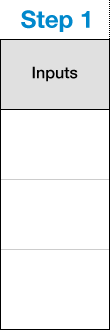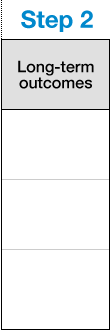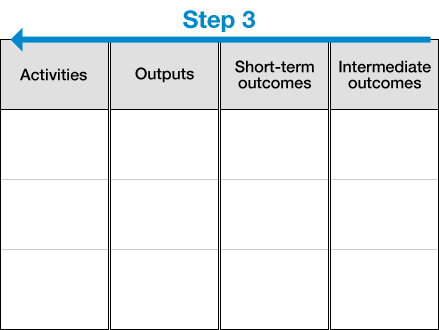How to Build a Logic Model
When creating logic models, it is recommended that you start at the left-most column, to define your inputs, then jump to the last column, to define the long-term outcome of your program, and then fill in the middle columns from right to left in this order: intermediate outcomes, short-term outcomes, outputs, activities. To encourage this thinking, the system will guide you through this process. A completed logic model is read from left to right using if-then statements. For example, if the inputs are in place, then the activities can be accomplished. If the activities are accomplished, then the outputs can be produced. If all that happens, then the short-term outcomes will occur. And if the short-term outcomes are achieved, then the intermediate outcomes occur; and if the intermediate outcomes are achieved, then the long-term outcomes will be achieved.



Logic models can also be created keeping in mind the conceptual framework developed by Urie Brofenbrenner indicating that behavior is influenced by individual and environmental determinants. Based on Brofenbrenner’s original framework, public health professionals proposed an ecological model for health promotion which stated that behavior is determined by five levels, including:
- Individual factors: characteristics of the individual such as knowledge, attitudes, behavior, self-concept, and skills
- Interpersonal factors: formal and informal social networks of friends, family, and other acquaintances
- Organizational or institutional factors: social institutions with formal ad informal rules and regulations for operation
- Community factors: relationships among organizations/institutions within defined boundaries
- Public Policy: local, state, and national law (McLeroy, Bibeau, Steckler, & Glanz, 1988)
When logic models are developed for a public health program, public health professionals can create plans that include one, several, or all of the levels from the ecological model, with the most effective interventions often including multiple levels.
